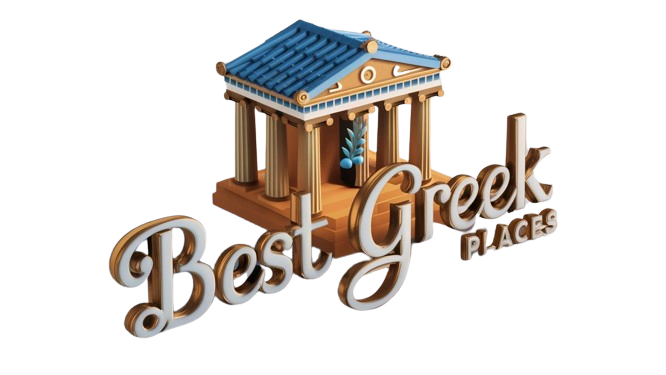An Immortal Legacy: The Sanctuary of Apollo at Delphi
Introduction to a Sacred Site
The Sanctuary of Apollo at Delphi stands as one of the most revered archaeological sites in Greece. Nestled against the slopes of Mount Parnassus, this ancient sanctuary was dedicated to Apollo, the Greek god of prophecy, music, and healing. As a pivotal center for worship and consultation, Delphi drew visitors from all corners of the ancient world, eager to seek divine wisdom.
Historical Context of the Oracle
Delphi was the home of the Oracle of Delphi, a prophetic priestess known as the Pythia. For centuries, she delivered cryptic messages and guidance believed to be divinely inspired. Pilgrims came from far and wide, not only to consult the Oracle for personal advice but also for matters of state and warfare. The significance of the Sanctuary of Apollo transcended mere religious practices; it shaped political landscapes and influenced major decisions across the Greek city-states.
Architecture That Inspires Awe
The architectural brilliance of the Sanctuary of Apollo is truly remarkable. It features an intricate collection of temples, treasuries, and theaters that showcase the artistic prowess of ancient Greek civilization. The most famous structure within the complex is the Temple of Apollo, built in the 4th century BCE. Its iconic Doric columns and elaborate decorative elements reflect the height of Hellenic architectural achievement.
The Cultural Heart of Ancient Greece
Delphi wasn’t just a religious hub; it was also a cultural epicenter. The sanctuary hosted the Pythian Games, a significant athletic competition second only to the Olympics. Athletes gathered to compete in various sports, further intertwining physical prowess with spiritual devotion, solidifying Delphi’s reputation as a multifaceted cultural venue.
Sanctuary Expansion Through The Ages
Over the centuries, the Sanctuary of Apollo at Delphi underwent numerous renovations and expansions. Each era contributed its unique style and flair, adding layers of complexity to the site’s rich narrative. From the early days of humble offerings to the grandeur of the Roman period, these developments illustrate the enduring significance of this sacred mountain retreat.
Archaeological Discoveries
Excavations at the Sanctuary of Apollo have unearthed a wealth of artifacts that shed light on the practices and beliefs of its ancient worshippers. Statues, inscriptions, and votive offerings provide insight into the devotion exhibited by visitors who sought the Oracle’s guidance. Each artifact narrates a tale of reverence and aspiration, underscoring the sanctuary’s pivotal role in ancient society.
The Role of the Pythia
The Pythia, often shrouded in mystery, was an essential figure at the Sanctuary of Apollo. Her prophetic utterances were delivered in a trance-like state, often interpreted by priests. This process introduced an element of drama and unpredictability, drawing even more attention to the spiritual significance of Delphi.
Panhellenic Identity
Delphi’s influence transcended regional loyalty, emerging as a symbol of Panhellenic unity. The sanctuary served as a site where Greeks from diverse city-states convened, fostering a collective identity. The shared pilgrimage to find answers from the Oracle united citizens under a common spiritual and cultural narrative.
Art and Architecture as Testaments
The artistry of the Sanctuary of Apollo at Delphi is evident not only in its structures but also in the intricate details of its sculptures and reliefs. Various monuments, including the famous Charioteer of Delphi, highlight the level of artistry that characterized this important site. These visual spectacles tell stories of tradition and mythology that continue to resonate with audiences today.
Environmental Harmony
The natural setting of the sanctuary enhances its spiritual ambiance. Surrounded by the majestic mountains and the sacred grove of laurel trees, the location was as significant as the structures themselves. The stunning vistas added to the divine nature of the rituals performed, intertwining the physical and spiritual realms in profound ways.
Decline and Abandonment
Despite its glory, the Sanctuary of Apollo at Delphi experienced a decline, particularly during the rise of Christianity in the early centuries CE. By the end of the fourth century, the Oracle had become largely dormant. The gradual abandonment of Delphi reflects the broader transformation in religious practices and beliefs permeating the region.
Rediscovery in Modern Times
In the 19th century, the Sanctuary of Apollo was rediscovered, sparking renewed interest in its history. Archaic structures, artifacts, and the remnants of its once-bustling atmosphere stirred excitement within the archaeological community. Today, extensive excavation efforts continue, revealing an ever-deepening understanding of the site’s historical importance.
Cultural Significance in the Present
Today, the Sanctuary of Apollo at Delphi remains a UNESCO World Heritage Site, a testament to its enduring legacy. Visitors from around the globe flock to this ancient marvel, captivated by its historical and cultural richness. The site serves not only as a window into the past but also as a reminder of humanity’s quest for knowledge and understanding.
Tourism and Educational Opportunities
For those interested in history, archaeology, and religion, Delphi offers a plethora of educational opportunities. Guided tours provide deeper insights into the rituals, architectural wonders, and the profound impact this sanctuary had on ancient civilization. Interactive exhibits and museums further enhance the experience, allowing visitors to connect with Delphi’s vibrant legacy.
Conclusion: A Timeless Journey
The Sanctuary of Apollo at Delphi is not merely a collection of ancient ruins; it is a powerful symbol of humanity’s enduring search for meaning. With its rich history, artistic beauty, and cultural relevance, this sacred site continues to inspire and captivate those who seek to explore the remarkable legacy of the ancient Greeks. As we visit Delphi, we are reminded that the echoes of the past resonate within us, inviting us to reflect on our own journeys.





















